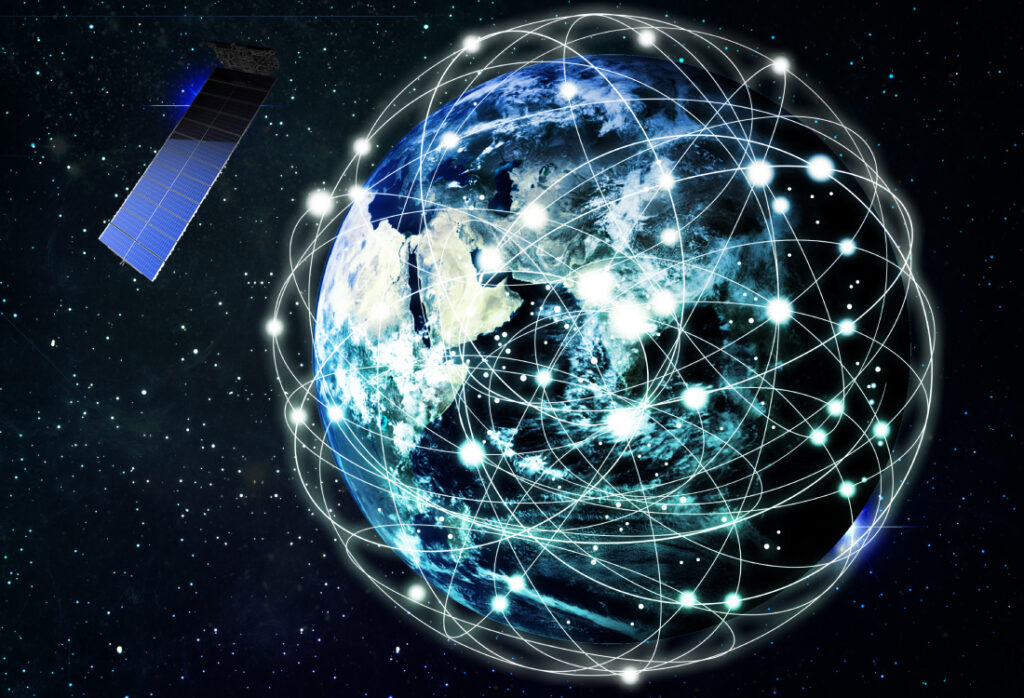How Elon Musk’s Starlink is Revolutionizing Global Internet Connectivity
In recent years, Elon Musk’s Starlink has garnered significant attention for its ambitious goal: providing global internet access. As traditional methods of internet connectivity struggle to reach remote areas, Starlink offers a groundbreaking solution. This article will explore how Starlink is transforming the world of internet connectivity, its current status, and its future prospects.
Understanding Starlink: The Basics
Starlink is a satellite internet constellation developed by SpaceX, founded by Elon Musk. Unlike traditional internet services that rely on ground-based infrastructure, Starlink aims to deliver high-speed internet through a constellation of low Earth orbit (LEO) satellites. This innovative approach addresses many challenges of conventional broadband and cellular networks.
The Technology Behind Starlink
Starlink’s technology is built on a network of thousands of small satellites orbiting the Earth. These satellites are positioned in low Earth orbit, approximately 550 kilometers above the surface. This low altitude reduces latency compared to traditional geostationary satellites.
How It Works
The Starlink system uses phased-array antennas on the satellites to communicate with user terminals on the ground. These user terminals, often referred to as Starlink dishes, are designed to connect seamlessly with the satellites overhead. The system supports high-speed data transmission and provides internet access even in the most remote locations.
The Constellation
Currently, the Starlink constellation consists of more than 4,000 satellites, with plans to deploy up to 12,000 by the mid-2020s. This large number of satellites helps ensure continuous coverage around the globe. The network is designed to be resilient, offering redundancy in case of satellite failures.
Impact on Global Internet Access
The primary goal of Starlink is to bridge the digital divide by providing internet access to underserved and remote regions. Traditional internet infrastructure often struggles to reach these areas due to high costs and logistical challenges. Starlink offers a solution by delivering internet via satellite, bypassing the need for extensive ground-based infrastructure.
Bridging the Digital Divide
Many rural and remote areas around the world lack reliable internet access. This issue affects education, business opportunities, and emergency services. Starlink aims to address these challenges by offering affordable and high-speed internet to these underserved regions.
Economic Opportunities
Access to high-speed internet opens new economic opportunities for individuals and businesses in remote areas. Starlink enables telecommuting, online education, and digital entrepreneurship. This connectivity can help stimulate local economies and create new jobs.
Current Status of Starlink
As of late 2024, Starlink has expanded its service to over 60 countries. The network is continually growing, with ongoing launches adding more satellites to the constellation. Service availability varies by region, but coverage is steadily improving.
Speed and Performance
Starlink offers internet speeds ranging from 50 to 200 Mbps, depending on the location and network congestion. This speed is competitive with traditional broadband services and often exceeds the performance of cellular data networks in remote areas.
User Experience
The user experience with Starlink has been generally positive. Customers report high-speed internet and reliable connectivity. However, some users have experienced issues with dish alignment and service interruptions, especially during adverse weather conditions.
Challenges and Criticisms
Despite its innovations, Starlink faces several challenges and criticisms. Some concerns include:
Space Debris
The growing number of satellites raises concerns about space debris. The potential for collisions and debris generation could impact other space missions and increase the risk of accidents in orbit.
Astronomical Observations
Astronomers have expressed concerns about the impact of Starlink satellites on astronomical observations. The bright reflections from the satellites can interfere with telescope observations and affect research.
Regulatory Hurdles
Starlink must navigate various regulatory environments across different countries. Each nation has its own rules regarding satellite communications and spectrum usage. Compliance with these regulations is essential for global expansion.
Future Prospects for Starlink
The future of Starlink looks promising, with several key developments on the horizon.
Expanding Constellation
SpaceX plans to expand the Starlink constellation to include thousands more satellites. This expansion aims to enhance network coverage and performance, further improving service availability worldwide.
Technological Advancements
Starlink is continuously evolving its technology. Future upgrades may include advanced beamforming techniques, improved user terminals, and enhanced satellite capabilities. These advancements will likely lead to even faster speeds and more reliable connections.
Global Coverage
One of the primary goals for Starlink is to achieve global coverage. The company aims to provide internet access to every corner of the Earth, ensuring that no region is left behind.
Partnerships and Collaborations
Starlink may form partnerships with local internet service providers and telecommunications companies. These collaborations could help integrate Starlink services into existing infrastructure and expand its reach.
Starlink’s Role in Disaster Relief
Another significant aspect of Starlink is its potential role in disaster relief efforts. In areas affected by natural disasters, traditional communication infrastructure is often damaged or destroyed. Starlink can provide a vital communication link, helping with rescue operations and recovery efforts.
Case Studies
In recent disasters, such as earthquakes and hurricanes, Starlink has been used to establish emergency communication networks. The system’s ability to quickly deploy and provide internet access has proven invaluable in these situations.
Conclusion
Starlink represents a significant advancement in global internet connectivity. By leveraging a constellation of low Earth orbit satellites, Starlink provides high-speed internet to remote and underserved areas. While challenges remain, the impact of Starlink on bridging the digital divide and transforming global internet access is undeniable. As the constellation continues to grow and technology advances, Starlink will likely play an even more crucial role in connecting the world.. For more of the latest updates and information on such innovations, visit getnewupdates.com.













